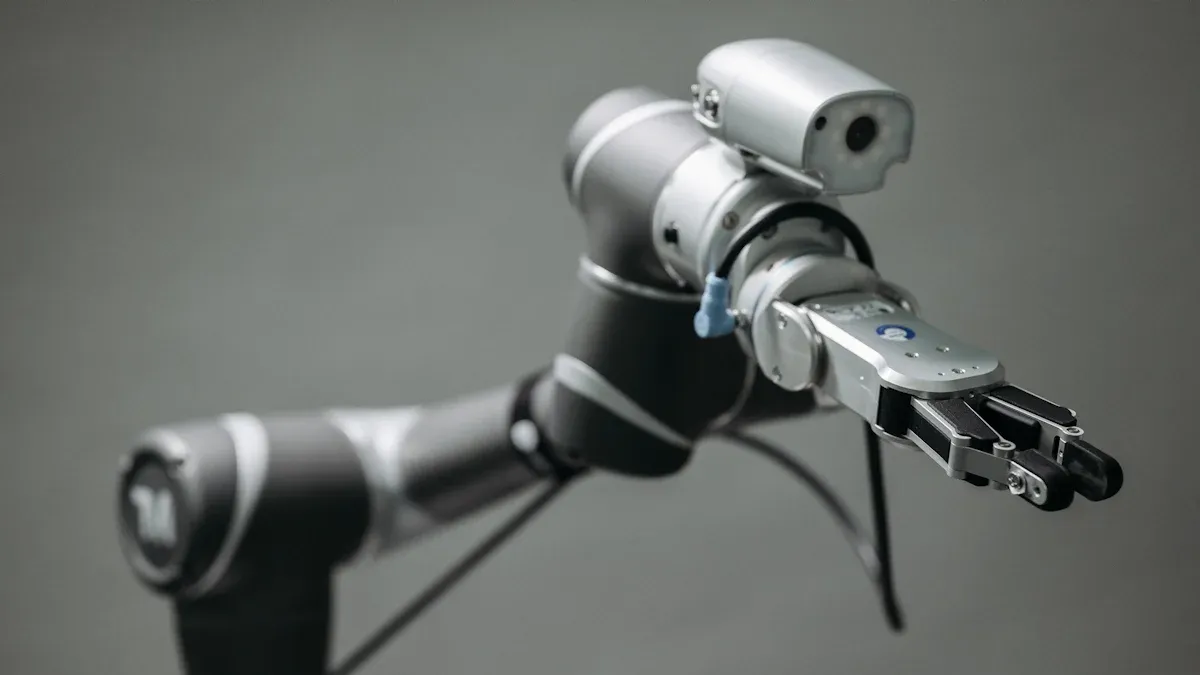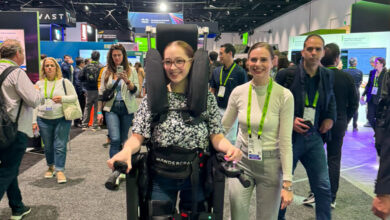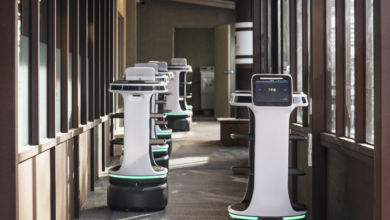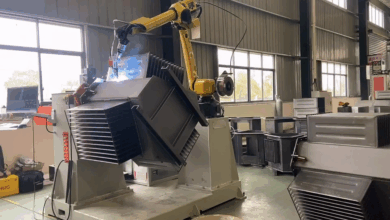Seven ways to program Universal Robots in 2025
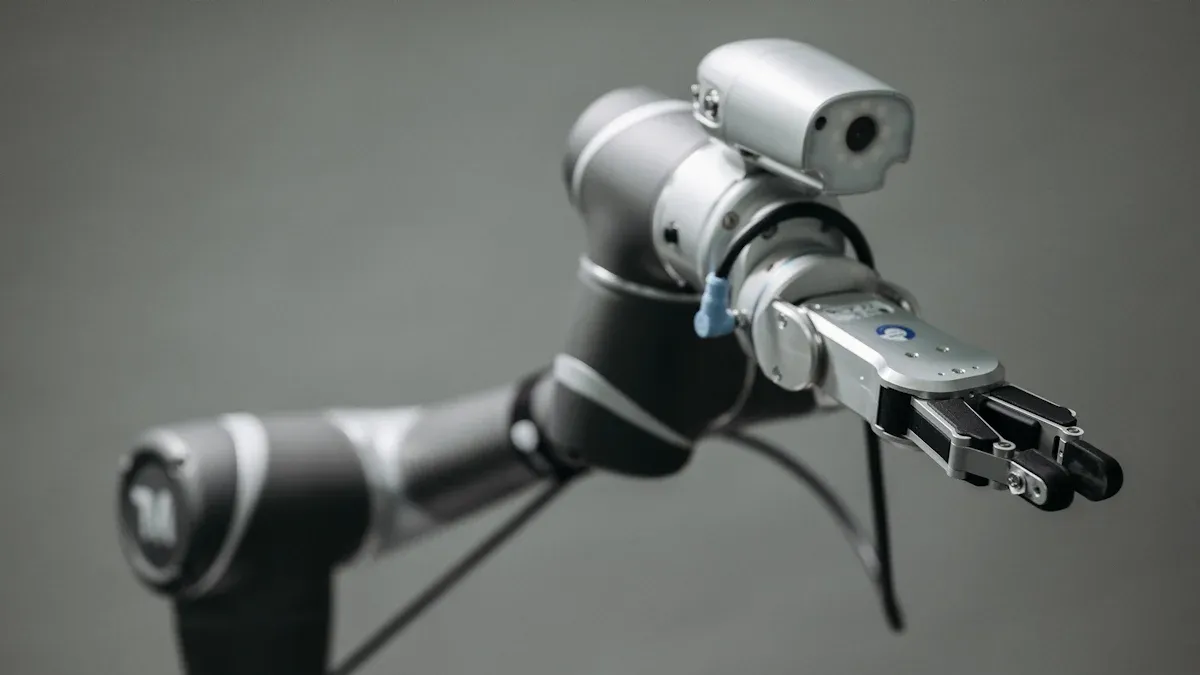
You can program a robot in many ways today. Universal robots programming keeps changing quickly. New tools make it easier and cheaper to program universal robots. More companies use universal robots now, especially in Asia. Collaborative robots and programming are getting easier for everyone.
Visual Programming

Overview
Visual programming lets you make robot tasks with pictures and blocks. You do not need to type code. You use a teach pendant. This is a touchscreen device. You drag and drop program nodes into a tree. This way is good for collaborative robots. It is great for first time users. It also works well for trying out collaborative robot simulations.
Here are some tools and interfaces you might use:
|
Tool/Interface |
Description |
Usage Context |
|---|---|---|
|
Universal Robots (Pro) |
Connects real or virtual robot controllers with realvirtual.io. Uses RTDE and URScript commands. |
Main interface for controlling Universal Robots in realvirtual.io Professional. |
|
URSIM |
Virtual machine simulator for Universal Robots. |
Lets you test and control robots virtually. |
|
LogicSteps |
Visual tool for PLC logic mapping in realvirtual.io. |
Used for mapping PLC logic visually. |
|
Unity Visual Scripting |
Visual scripting tool in realvirtual.io. |
Helps define robot control logic visually. |
|
Behavior Graph |
Visual tool for defining logic in realvirtual.io. |
Another way to set up robot behavior visually. |
How It Works
You build a program by dragging blocks or icons on the screen. Each block tells the robot what to do. The robot can move, pick, or place things. The program tree shows the order of actions. You can test your program right away. You do not need a real robot to try it.
Easy to Program
Visual programming is easy because you do not need to know coding. You use your eyes and hands to arrange blocks. Many people with little technical skill can use it. Block-based environments help you start fast. You do not need to have programmed before. Some tools help people with disabilities. They use audio or touch feedback.
-
Block-based programming helps new users get started.
-
Special blocks and feedback help users with disabilities.
-
Visual programming makes programming easy for everyone.
Benefits
Visual programming is easy and quick to learn. You can set up a robot in minutes. Drag-and-drop helps you see what the robot will do. Augmented reality tools make it even easier. They show the program in the real workspace. This helps you understand tasks like pick-and-place. You do not have to guess. Visual programming lets you change robot tasks quickly. This is good for flexible manufacturing.
Limitations
-
Fixed task structures make hard jobs less flexible.
-
You may not find advanced features like loops or custom logic.
-
Some users have trouble with robot movement or connecting to other machines.
-
Visual programming can be slower for mass production with few changes.
Use Cases
You can use visual programming for many jobs:
Visual programming works best in automotive, electronics, and food industries. You can program a robot in about 90 seconds. This makes it easy to change and add new tasks.
URScript
Overview
URScript is the main scripting language for Universal Robots. When you use the Polyscope interface, it creates URScript code behind the scenes. You can write your own URScript to control the robot directly. This gives you more power and flexibility than just using the visual tools. URScript lets you see and change the code that runs your robot. You can use it for advanced programming tasks that need more detail.
How It Works
You write commands in URScript, which looks a bit like Python. Each command tells the robot what to do. You can move the robot, set speeds, or even talk to other devices. URScript supports real-time control, so you can make the robot respond to sensors or outside signals right away. You can also use subroutines and variables to keep your program organized. URScript lets you connect with devices using sockets or Modbus TCP, which helps your robot work with other machines.
Benefits
URScript gives you precise control over every move. You can create custom programs for special jobs. If you want to switch between visual programming and script writing, URScript makes it easy. Many users like how URScript lets them adjust things like speed and acceleration for each task. You can also connect UR robots with systems like ROS for even more advanced programming.
Limitations
URScript has some limits. The biggest one is with numbers. It only supports 32-bit signed integers, so you must watch out for big values. If your program gets too long, you might see errors or crashes. Some users have trouble with very large scripts, so you may need to break up your program or use other tools for huge jobs.
Use Cases
You should use URScript when you need more control than visual tools can give. It works well for:
URScript is great for jobs where you want the robot to work with other machines or change tasks quickly.
URCaps
Overview
URCaps are like apps for your robot. You can add new things to your Universal Robot by installing a URCap. These software add-ons let you change your robot and give it more abilities. You can add grippers, cameras, or special tools for welding. URCaps help you use these devices right from the robot’s touchscreen.
How It Works
You install a URCap using the robot’s Polyscope interface. After installing, you get new menus or buttons for your device. URCaps can add custom screens, program nodes, or steps for automatic calibration. This helps you add new hardware or software to your robot’s work. You do not have to write code for every new device.
Benefits
URCaps have many good points:
-
You can connect grippers, vision systems, and other tools fast.
-
The system can calibrate itself, so you get better accuracy and less downtime.
-
You can use new drivers for screwdrivers or welding torches.
-
URCaps let you import complex toolpaths, like G-Code, for tough jobs.
-
You get help from the UR developer community and can use certified solutions.
Limitations
URCaps work best with UR e-Series and some CB3 robots. Some advanced features only work with the newest software. You might need to update your robot to use the latest URCaps. Not every device has a URCap yet, so you may have to wait for new ones.
Use Cases
You can use URCaps for many jobs:
-
Assembly with autofeed screwdrivers
-
Welding with special torches
-
Machine tending with CNC machines
-
Quality checks using cameras
-
Material handling and finishing tasks
URCaps make it easy to add new tools to your robot and help you finish work faster.
ROS Integration


Overview
You may have heard of ROS. It stands for Robot Operating System. ROS is a free tool that helps connect robot parts. These parts can be sensors, cameras, or motors. ROS lets your Universal Robot work with many devices. These devices can be from different brands. They can also use different programming languages. This makes ROS important for advanced programming. You get libraries and tools to build smart robot features. You do not have to start from zero. The ROS community is big and helpful. You can find answers and share ideas with others.
|
Aspect |
Explanation |
|---|---|
|
Definition of ROS Integration |
ROS connects hardware like sensors and motors. It also connects software for robot control. For Universal Robots, you can program and control arms with ROS tools and drivers. |
|
Importance for Advanced Programming |
ROS helps manage many devices. It makes development faster. You can also reuse code. |
How It Works
You use special ROS drivers to link your Universal Robot to ROS. These drivers let you send commands and read data. You can control the robot in real time. You can run the robot in different ways. You can use full remote control or mix with UR programs. ROS supports hybrid programming. This means you can use ROS with other methods. Many developers use simulation tools like Gazebo. They test their robot programs before using a real robot.
Benefits
ROS integration gives you many good things:
-
Plug-and-play setup makes programming simple.
-
Factory calibration data helps you get better accuracy.
-
Stable APIs and testing keep your robot working well.
-
The open-source driver on GitHub gives you help and updates.
-
You can control your robot fully or just add ROS features.
Tip: ROS lets you use advanced features. These include force control and planning robot moves. These help with hard tasks.
Limitations
ROS integration can seem hard at first. Some features do not work in URScript. These are action and service servers. You might have network problems. Firewalls or Docker can block connections. ROS2 runs in separate threads. This can cause delays. Some data types, like unsigned integers, are not fully supported. You may need to change your setup for best results.
|
Limitation Category |
Details |
|---|---|
|
ROS2 Feature Support |
No action or service servers in URScript. Some data types are not supported. |
|
Network & Node Discovery |
Firewalls and Docker can block connections. You may need a static IP. |
|
Threading & Processor Load |
ROS2 runs in non-realtime threads. This can slow things down. |
Use Cases
You can use ROS integration for many jobs:
-
Robot calibration and controlling movement
-
Automation and making new ideas
-
Advanced programming with real-time feedback
-
Flexible robot control with the teach pendant and ROS services
-
Safe operation with speed scaling and safety features
ROS works well for pick-and-place, assembly, and welding. You can pause, stop, or start your robot again without restarting everything. This makes ROS a good choice for labs, factories, and anyone who wants more control over their Universal Robot.
External Control
Overview
External control means you can run your Universal Robot from another computer. You do not have to be next to the robot. You connect with Ethernet and special protocols. This lets you link your robot with custom hardware or other systems. You can send commands from anywhere on your network.
How It Works
You use client libraries and protocols to talk to the robot. Some tools are popular for this. The ur_client_library is open-source and uses C++. It helps you control the robot from far away. It works with RTDE, DashboardClient, and Script Command Interface. Socket communication is fast and good for real-time control. XML-RPC is simple and works over HTTP. The UnderAutomation library works with both sockets and XML-RPC. You need a Linux computer and a network connection. The robot listens for commands and does what you say. You can make the robot move, pick, or check parts using your own software.
Benefits
External control gives you lots of choices. You can set up your robot in many places. The robot works with grippers, cameras, PLCs, and conveyors. You can add mobile robots with transfer units. The robot is light, so it is easy to move and install. You save time by programming and testing from your desk. The robot fits in many types of factories and labs.
Tip: You can use external control to connect your robot with vision systems. This helps you check quality better.
Limitations
You must set up your network so your computer and robot can talk. Some libraries only work on Linux. If your network is slow or blocked, you may have delays. Not all features work on every robot model. You might need to update your robot’s software for best results.
Use Cases
External control is great for custom automation. You can automate quality checks and collect data. You can fix production problems right away. Many companies use robots to measure parts and improve quality. Robots can work with people and do boring or risky jobs. You can program the robot to do new tasks fast. This makes your factory more flexible.
Hybrid Programming Methods
Overview
Hybrid programming methods let you combine different ways to control your Universal Robot. You can use voice commands, hand gestures, and even vision-based inputs together. This approach uses new technology like 3D tracking, augmented reality, and machine learning. You do not need to know how to code. You can show the robot what to do or talk to it. This makes it easy for anyone to create a program, even if you have never worked with robots before.
How It Works
You start by giving the robot simple instructions. You might say, “Pick up the box,” or wave your hand to show where to move. The robot uses cameras and sensors to understand you. Sometimes, you use a touchscreen to finish the program. The system puts everything together using a control system called a finite state machine. This setup lets you switch between talking, showing, or using blocks to build your program. You get a flexible and natural way to teach your robot.
Benefits
-
You can use natural language and block-based tools together, making programming simple for everyone.
-
Non-technical users can create or change a program quickly.
-
You get more flexibility and can handle many tasks, like assembly or inspection.
-
The learning curve is smooth, so you can start with easy tasks and move to harder ones.
-
Hybrid methods help you save time and boost efficiency.
Note: Hybrid programming methods make robots more user-friendly and help your team work faster.
Limitations
-
Voice commands alone may not handle very complex jobs.
-
You often need to finish or adjust the program using block-based tools.
-
Some systems cost more at first, which can be tough for small companies.
-
Hybrid methods may not fit jobs that need extreme precision or special tools.
Use Cases
You can use hybrid programming methods for many jobs. These include machine tending, assembly, and quality checks. If you want to teach a robot a new task fast, hybrid methods work well. They are great for factories that need to change tasks often. You can also use them in labs or schools where people have different skill levels.
Custom and Third-Party Solutions
Overview
Sometimes, you want your Universal Robot to do something special. Custom and third-party solutions can help with this. These tools include SDKs, APIs, and vendor software. You can use them to connect your robot to other machines. You can also add new features. Some companies make their own tools. Others buy ready-made solutions from trusted partners.
How It Works
First, you choose the tool that fits your needs. Here are some popular choices:
-
Standard Robot Command Interface (SRCI): This lets you control your robot from Siemens PLCs. You update your robot’s software and install a URCap. Then, you can program your robot like your other machines.
-
AI Accelerator platforms: Universal Robots and NVIDIA work together to add AI to cobots. With NVIDIA’s Jetson hardware and Isaac platform, your robot can see objects and plan moves. It can also learn new tasks. You use APIs to connect these features to your robot.
You can also get SDKs and APIs from other vendors. These let you build custom apps or connect your robot to cloud services.
Benefits
-
You get solutions made for your factory.
-
You can connect robots to your current systems.
-
AI and advanced tools help your robot do hard jobs.
-
Vendors and partners give you support to set things up.
Tip: Custom solutions help you program robots for special jobs that standard tools cannot do.
Limitations
-
Some solutions only work with certain robot models or software.
-
You might need experts to set up advanced features.
-
Updates or changes can take more time.
|
Limitation |
What It Means for You |
|---|---|
|
Compatibility |
May need the newest robot software |
|
Complexity |
Might need expert help |
|
Update Delays |
New features can take longer |
Use Cases
You can use custom and third-party solutions for many jobs:
-
Connecting robots to Siemens PLCs in large factories
-
Adding AI for real-time object detection
-
Making apps for special inspection or assembly jobs
-
Linking robots to cloud dashboards to track data
These options help you program your robot for almost any job you can think of.
Comparison Table
Quick Reference
You may not know which programming method is best for you. This table helps you compare the main universal robots programming methods:
|
Method |
Skill Level |
Flexibility |
Best For |
Limitations |
|---|---|---|---|---|
|
Visual Programming |
Beginner |
Medium |
Fast setup, simple tasks |
Limited for complex logic |
|
URScript |
Intermediate |
High |
Custom moves, real-time control |
Needs coding knowledge |
|
URCaps |
Beginner+ |
Medium |
Adding hardware, quick upgrades |
Not all devices supported |
|
ROS Integration |
Advanced |
High |
Research, multi-robot setups |
Steep learning curve |
|
External Control |
Intermediate |
High |
Remote access, custom systems |
Network setup needed |
|
Hybrid Methods |
Beginner+ |
High |
Flexible, easy teaching |
May need extra hardware |
|
Custom/Third-Party |
Advanced |
Very High |
Special jobs, AI, big factories |
Can be complex, costly |
Tip: If you are just starting, use visual programming. When you learn more, try URScript or hybrid methods.
Evst Recommendations
If you want to begin quickly, use visual programming or URCaps. These help you set up easy tasks fast. If you want more control, use URScript or hybrid methods. If you need special features or want to connect many robots, try ROS integration or custom and third-party solutions. You can use more than one universal robots programming method for your project. Evst says you should try different ways and see what works best for your team in 2025.
You have many ways to try robot programming. The best choice depends on your skills and what you want to do. Some methods work better for simple jobs, while others fit complex tasks. Explore different options for collaborative robots. Try new tools and check out Evst for more ideas.
